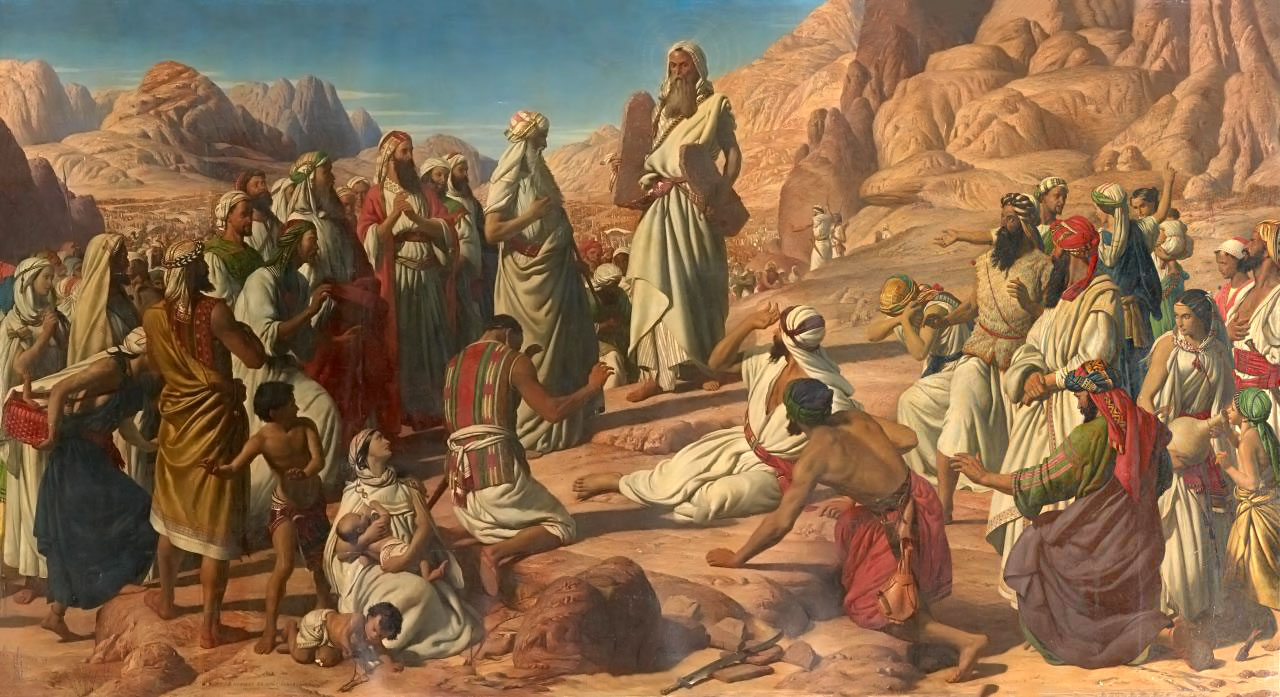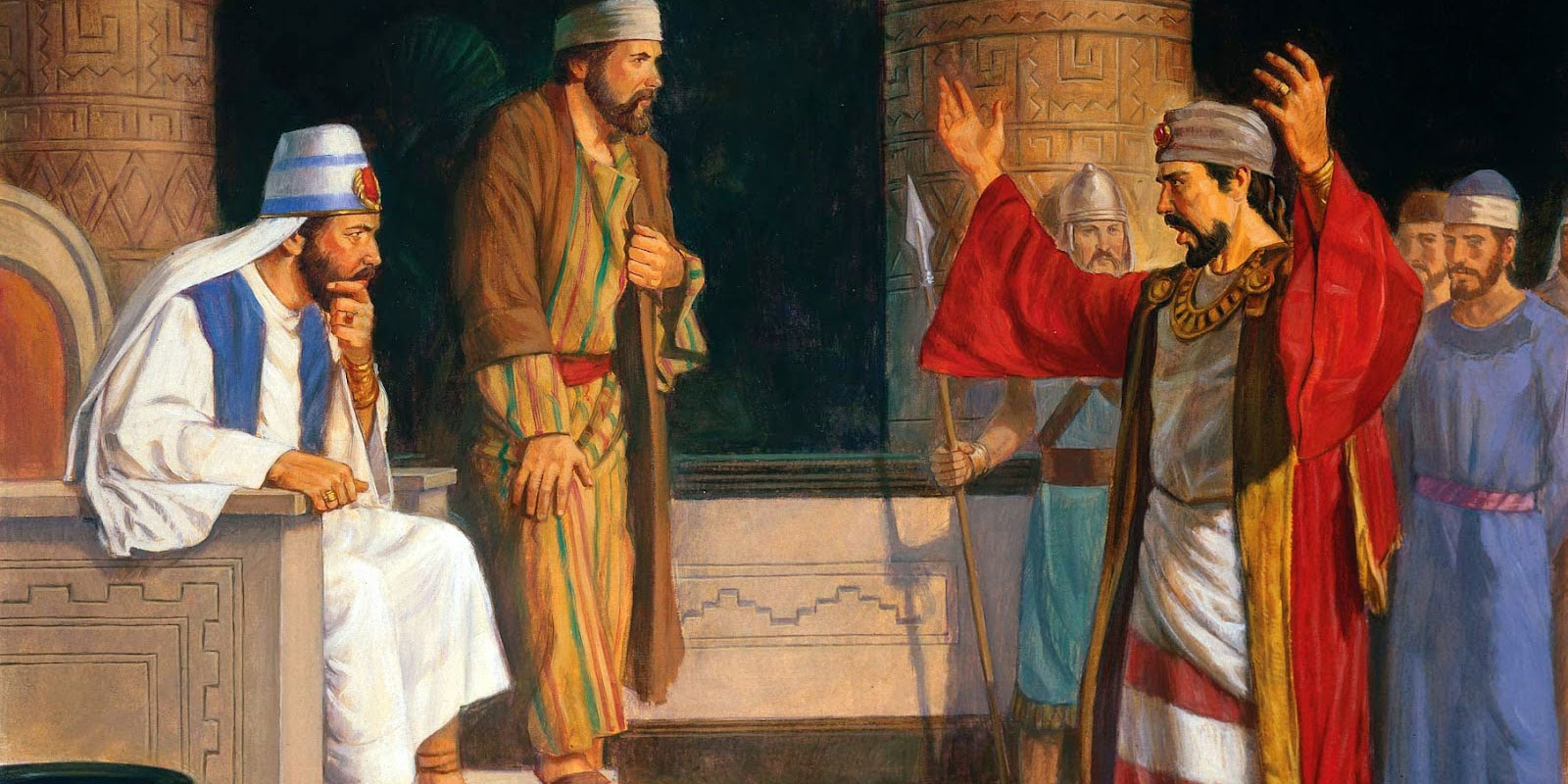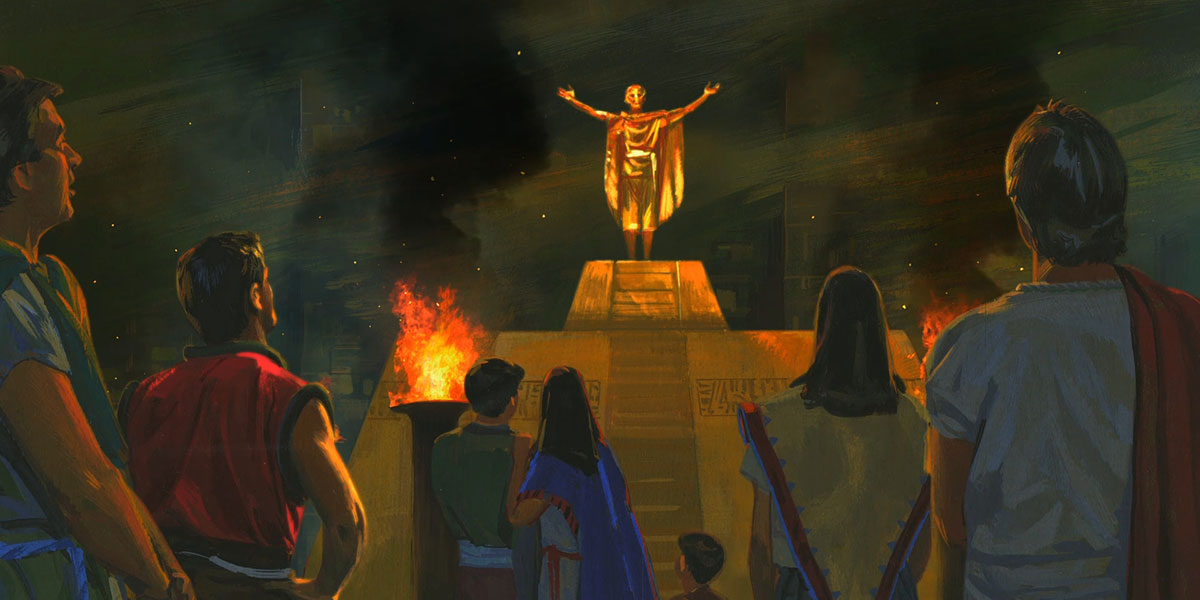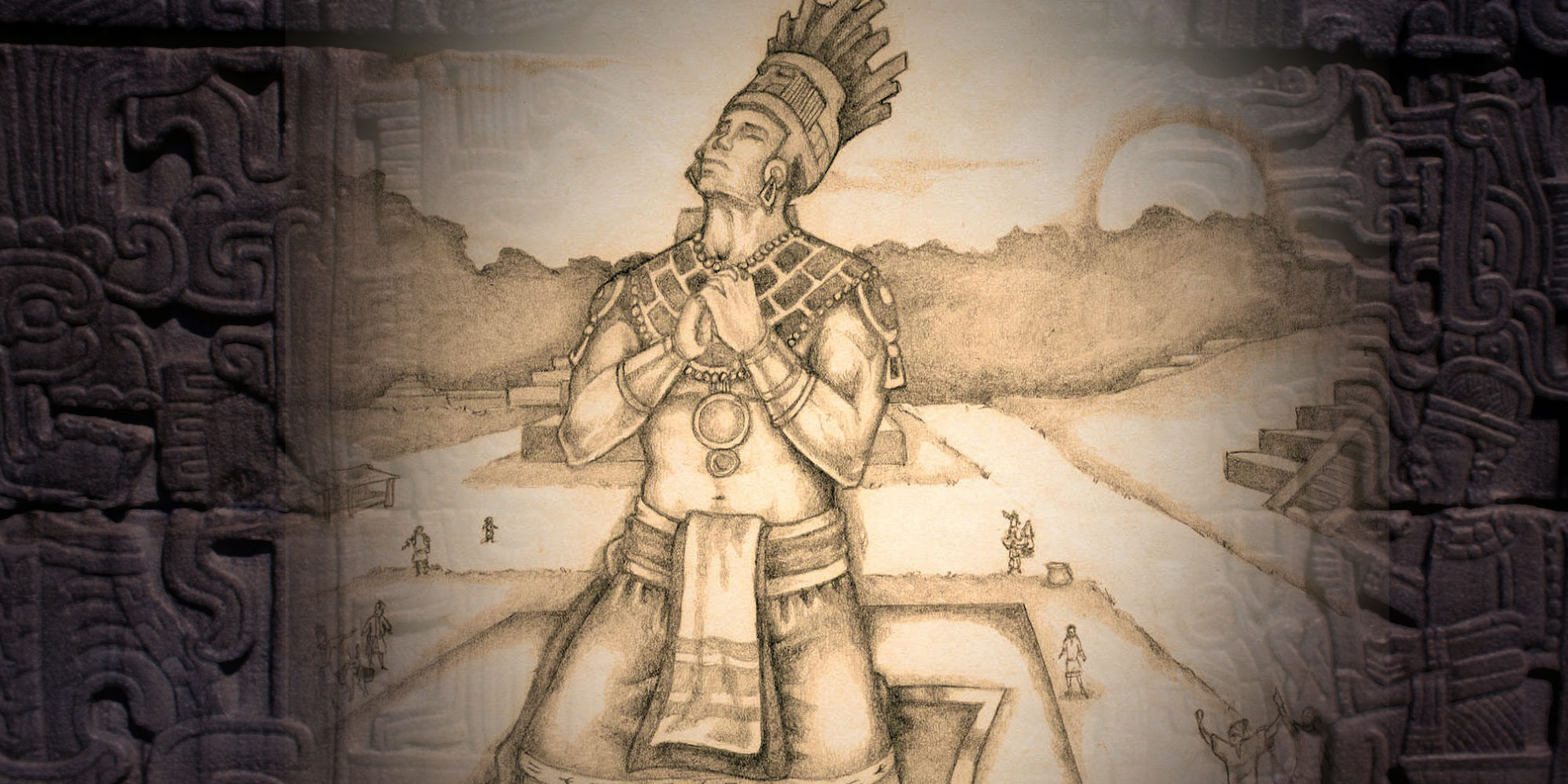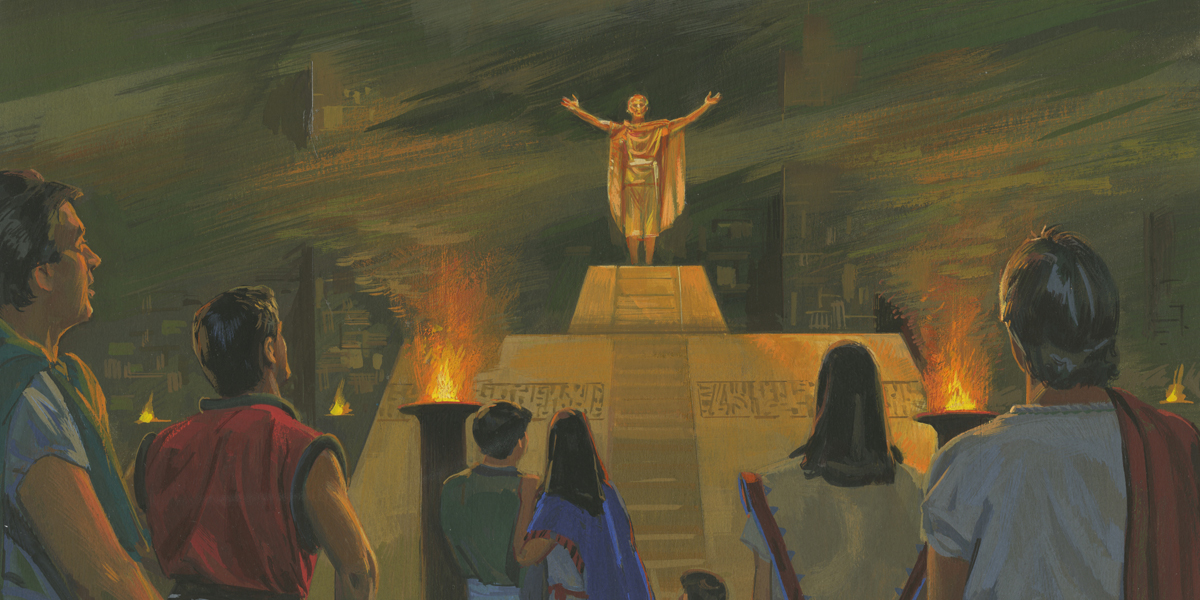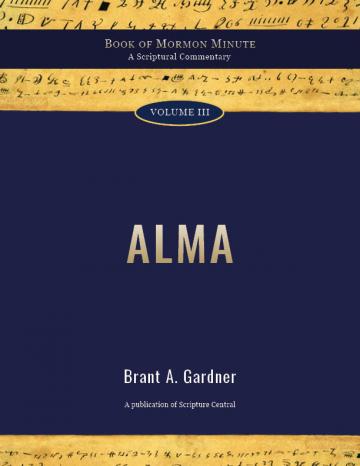You are here
Book of Mormon Central is in the process of migrating to our new Scripture Central website.
We ask for your patience during this transition. Over the coming weeks, all pages of bookofmormoncentral.org will be redirected to their corresponding page on scripturecentral.org, resulting in minimal disruption.
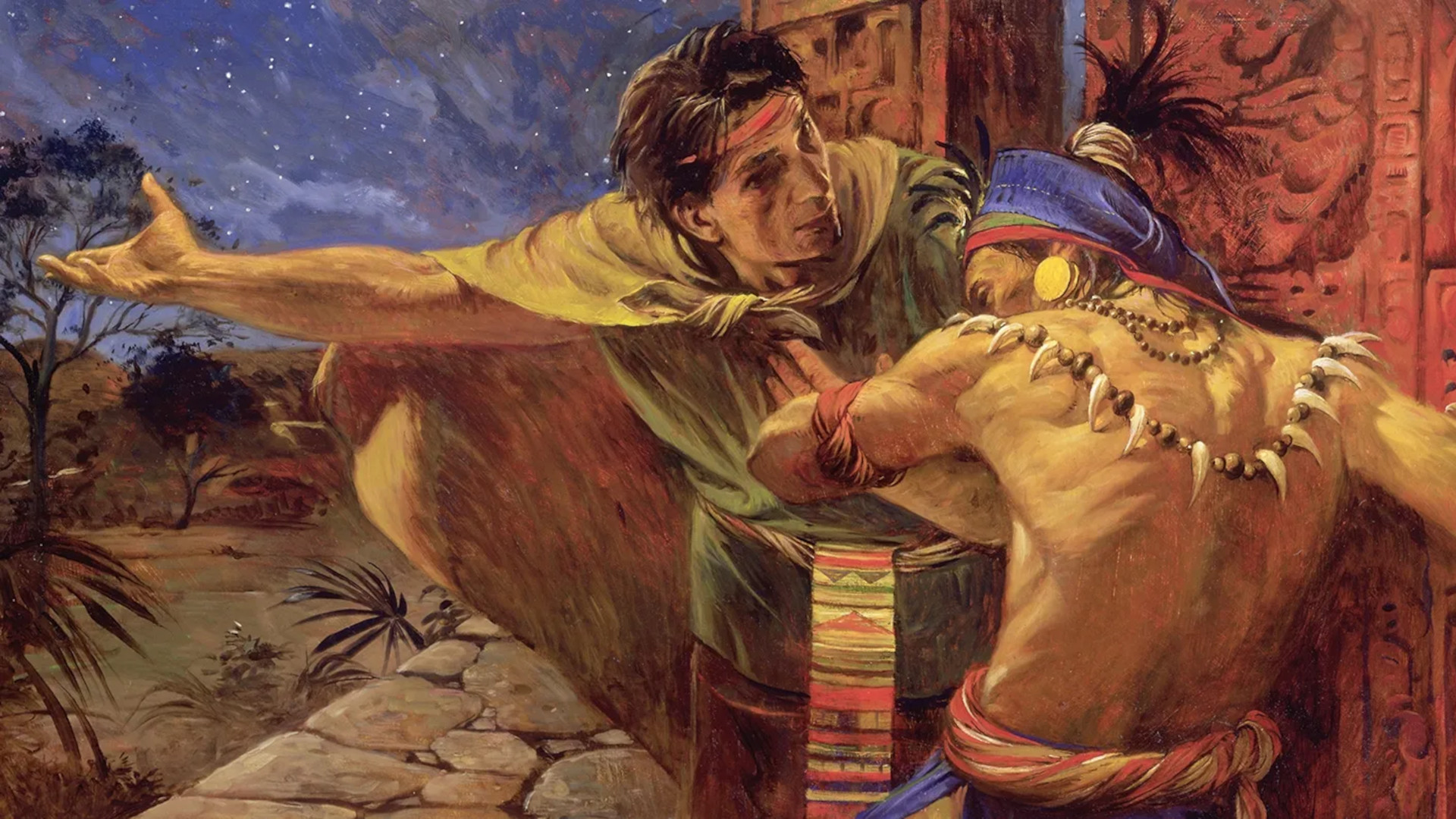
Alma 30–31
Scripture Central Videos
Watch videos from Gospel scholars and teachers to learn more about these Book of Mormon passages.
Other Creator Videos
KnoWhys
Evidences
Commentary
Book of Mormon Minute is a commentary series made especially for the free ScripturePlus app, which features insights from Book of Mormon scholar Brant A. Gardner. John W. Welch's notes for Come, Follow Me are also available for free.
John W. Welch, General Editor
Reading Plan
Structure your personal scripture study by following a 15-minute, day-by-day plan. Each day's assignment includes the required scripture passages from the Come, Follow Me curriculum, as well as suggestions for additional resources to bring context and understanding to your study. For the best experience, use our Reading Plan in the free ScripturePlus app! You can track your progress and have access to the best resources.
Monday
- Scripture: Alma 30:1-8
- KnoWhy: Why Does the Book of Mormon Use So Many Different Terms for “Law”?
-
Additional Study
- Commentary: Was This a Year of Jubilee?
- Commentary: Korihor, an Anti-Christ
- Commentary: Alma 30:6-8
- Commentary: Alma 30:1-5
Tuesday
- Scripture: Alma 30:9-29
- Commentary: Alma 30:22-23
- Commentary: Basic Public Nephite Law Described
-
Additional Study
- Commentary: Alma 30:24-28
- Commentary: What Doctrine Did Korihor Teach?
- Commentary: Korihor Had No Success in Jershon and Was Cast Out
- Commentary: Korihor Was Tried in Gideon
- Commentary: Alma 30:19-21
- Commentary: Comparing Sherem, Nehor, and Korihor
- Evidence: Synonymous Words
Wednesday
- Scripture: Alma 30:30-42
- Commentary: Was Korihor Really an Atheist?
- Commentary: Alma 30:29-31
- Commentary: Alma 30:32-36
-
Additional Study
- Evidence: Korihor’s Trial
- KnoWhy: Was Korihor Really an Atheist?
Thursday
- Scripture: Alma 30:43-60
- Commentary: The Judge Asked Four Questions; Korihor Answered One
- Commentary: Alma 30:44-47
-
Additional Study
- Evidence: Talionic Justice
- Evidence: Cursing with Speechlessness
- Commentary: Korihor Demanded a Sign
- Commentary: Korihor Was Struck Dumb
- Commentary: Korihor Confessed His Sins
- Commentary: The Nephites Learn What Happened to Korihor
- Commentary: Korihor Is Killed by the Zoramites
Friday
- Scripture: Alma 31:1-7
- Evidence: Wordplay on Antion
-
Additional Study
- Commentary: The Zoramite Defection Is Dangerous Militarily
- Commentary: Alma 31:1-2
- Commentary: Alma 31:3-4
- Commentary: Alma 31:5-7
Saturday
- Scripture: Alma 31:8-23
- Commentary: The Zoramites Perverted the Ways of the Lord
- Evidence: Wordplay on Zoram
-
Additional Study
- Commentary: Alma Was Shocked at the Zoramites’ Manner of Prayer
- Commentary: Alma 31:8-11
- Commentary: Alma 31:12-14
- Commentary: Alma 31:15-18
- Commentary: Alma 31:19-23
Sunday
- Scripture: Alma 31:24-38
- Commentary: Alma Prayed for Help in Reconverting the Zoramites
- KnoWhy: Why Did Alma Repeat the Lord’s Name Ten Times While in Prayer?
-
Additional Study
- Commentary: Alma 31:24-25
- Commentary: Alma 31:26-30
- Commentary: Alma 31:31-35
- Commentary: Alma 31:36-38
- Evidence: The Narrative Symbolism of Apparel
Additional Resources
Explore art, charts, and more.
Images
Charts
- The Nephite Judges
- Alma as High Priest: Years 9–19 of the Reign of the Judges
- Nephihah as Chief Judge: Years 9–24 of the Reign of the Judges
- Teachings of Korihor
- Missionary Work
- How Do You Say "Law" in Hebrew?
- Legal Cases and Procedures in the Book of Mormon
- Three Diverse Opponents of the Nephites
- A Comparison of Nephite Law Lists
- Nephite Cycles: Years 1–49 of the Reign of the Judges (90–40 B.C.)
- Metals in the Book of Mormon
- Whose Words Are Found in the Book of Mormon?
- Number of Pages in Books of the Book of Mormon
- Average Number of Pages Covering One Nephite Year
- Nephite Books Compared by Length and Years Covered
- Nephite Books Listed Chronologically
- Names Used for Christ by Major Book of Mormon Authors
- Names and Concepts Associated with Christ by Major Book of Mormon Authors
- Number of Names Used for Christ by Major Book of Mormon Authors
- Number of Names for Christ Used Exclusively by Individual Authors
- Ten Essential Features of Book of Mormon Geography
- Geographical Names Listed Alphabetically
- Geographical Names Listed by Scripture Reference
Bibliography
Alma 30
Hansen, Jr., Gerald. “The Book of Alma as a Prototype for Teaching the Word of God.” In The Book of Mormon: Alma, The Testimony of the Word, edited by Monte S. Nyman and Charles D. Tate, Jr., 263–280. Provo, UT: Religious Studies Center, Brigham Young University, 1992.
Lund, Gerald N. “Countering Korihor’s Philosophy.” Ensign 22, no. 7 (1992): 16–21.
Lund, Gerald N.. “An Anti-Christ in the Book of Mormon - The Face May Be Strange, but the Voice Is Familiar.” In The Book of Mormon: Alma, The Testimony of the Word, edited by Monte S. Nyman and Charles D. Tate, Jr., 107–128. Provo, UT: Religious Studies Center, Brigham Young University, 1992.
Welch, John W. “The Trial of Korihor.” In The Legal Cases in the Book of Mormon, 273–300. Provo, UT: BYU Press/Neal A. Maxwell Institute for Religious Scholarship, 2008.
Welch, John W., and Greg Welch. “Teachings of Korihor.” In Charting the Book of Mormon: Visual Aids for Personal Study and Teaching. Provo, UT: Foundation for Ancient Research and Mormon Studies, 1999, chart 78.
Welch, John W., and Greg Welch. “Three Diverse Opponents of the Nephites.” In Charting the Book of Mormon: Visual Aids for Personal Study and Teaching. Provo, UT: Foundation for Ancient Research and Mormon Studies, 1999, chart 122.
Alma 30:3
Welch, John W., and Greg Welch. “How Do You Say 'Law' in Hebrew?.” In Charting the Book of Mormon: Visual Aids for Personal Study and Teaching. Provo, UT: Foundation for Ancient Research and Mormon Studies, 1999, chart 119.
Alma 30:10
Welch, John W., and Greg Welch. “A Comparison of Nephite Law Lists.” In Charting the Book of Mormon: Visual Aids for Personal Study and Teaching. Provo, UT: Foundation for Ancient Research and Mormon Studies, 1999, chart 127.
Alma 30:13–15
Clark, Robert E. “Notes on Korihor and Language.” In Pressing Forward with the Book of Mormon: The FARMS Updates of the 1990s, edited by John W. Welch and Melvin J. Thorne, 150–153. Provo, UT: FARMS, 1999.
Wright, Mark Alan, and Brant A. Gardner. “The Cultural Context of Nephite Apostasy.” Interpreter: A Journal of Mormon Scripture 1 (2012): 25–55.
Alma 30:37–38
Book of Mormon Central. “Was Korihor Really an Atheist? (Alma 30:37–38).” KnoWhy 532 (September 19, 2019).
Alma 30:24–26
Wright, David P. “Wade Brown, The God-Inspired Language of the Book of Mormon: Structuring and Commentary.” Review of Books on the Book of Mormon 1, no. 1 (1989): 10–17.
Alma 30:41–44
Boyce, Duane. “Jacob Did Not Make a False Prediction.” Interpreter: A Journal of Latter-day Saint Faith and Scholarship 33 (2019): 161–174.
Roundy, Bruce A. and Robert J. Norman. “’All Things Denote There is a God’: Seeing Christ in the Creation.” in Religious Educator 6, no. 2 (2005): 51–62.
Alma 30:47
Welch, John W., and Heidi Harkness Parker. “Better That One Man Perish.” In Pressing Forward with the Book of Mormon: The FARMS Updates of the 1990s, edited by John W. Welch and Melvin J. Thorne, 17–19. Provo, UT: FARMS, 1999.
Wright, David P. “Wade Brown, The God-Inspired Language of the Book of Mormon: Structuring and Commentary.” Review of Books on the Book of Mormon 1, no. 1 (1989): 10–17.
Alma 30:49
Welch, John W. “Cursing a Litigant with Speechlessness.” In Pressing Forward with the Book of Mormon: The FARMS Updates of the 1990s, edited by John W. Welch and Melvin J. Thorne, 154–156. Provo, UT: FARMS, 1999.
Alma 30:50
Book of Mormon Central. “Why Was Korihor Cursed with Speechlessness? (Alma 30:50).” KnoWhy 138 (July 7, 2016).
Alma 31
Andersen, Joe V. Book of Mormon Objective Geographic Standard No. 2: Relationships of City Bountiful, Mulek, the East Sea, and Zarahemla., 2015.
Bowen, Matthew L. “’See That Ye Are Not Lifted Up’: The Name Zoram and Its Paronomastic Pejoration.” Interpreter: A Journal of Mormon Scripture 19 (2016): 109–143.
Hansen, Jr., Gerald. “The Book of Alma as a Prototype for Teaching the Word of God.” In The Book of Mormon: Alma, The Testimony of the Word, edited by Monte S. Nyman and Charles D. Tate, Jr., 263–280. Provo, UT: Religious Studies Center, Brigham Young University, 1992.
Richins, David. “Alma’s Song of Lamentation: How Long, O Lord?” The Lunch is Free, 2016.
Thompson, A. Keith. “Apostate Religion in the Book of Mormon.” Interpreter: A Journal of Mormon Scripture 25 (2017): 191–226.
Thompson, A. Keith. “Nephite Insights into Israelite Worship Practices before the Babylonian Captivity.” Interpreter: A Journal of Mormon Scripture 3 (2013): 155–195.
Welch, John W., and Greg Welch. “Missionary Work.” In Charting the Book of Mormon: Visual Aids for Personal Study and Teaching. Provo, UT: Foundation for Ancient Research and Mormon Studies, 1999, chart 109.
Alma 31:5
Perry, Michael F. “The Supremacy of the Word: Alma’s Mission to the Zoramites and the Conversion of the Lamanites.” Journal of Book of Mormon Studies 24 (2015): 119–137.
Alma 31:12
Welch, John W. “Synagogues in the Book of Mormon.” In Reexploring the Book of Mormon, edited by John W. Welch, 193–195. Provo, UT/Salt Lake City: FARMS/Deseret Book, 1992.
Alma 31:14
Calabro, David. “’Stretch Forth Thy Hand and Prophesy’: Hand Gestures in the Book of Mormon.” Journal of the Book of Mormon and Other Restoration Scripture 21, no. 1 (2012): 46–59.
Alma 31:24–25
Book of Mormon Central. “How is the Name Zoram Connected with Pride? (Alma 31:25).” KnoWhy 458 (August 14, 2018).
Brady, Parrish, and Shon D. Hopkin. “The Zoramites and Costly Apparel: Symbolism and Irony.” Journal of the Book of Mormon and Other Restoration Scripture 22, no. 1 (2013): 40–53.
Alma 31:26
Book of Mormon Central. “Why Did Alma Repeat the Lord’s Name Ten Times While in Prayer? (Alma 31:26).” KnoWhy 139 (July 8, 2016).
Alma 31:28
Book of Mormon Central. “Why did Mormon Emphasize the Zoramites’ Costly Apparel? (Alma 31:28).” KnoWhy 283 (March 6, 2017).














